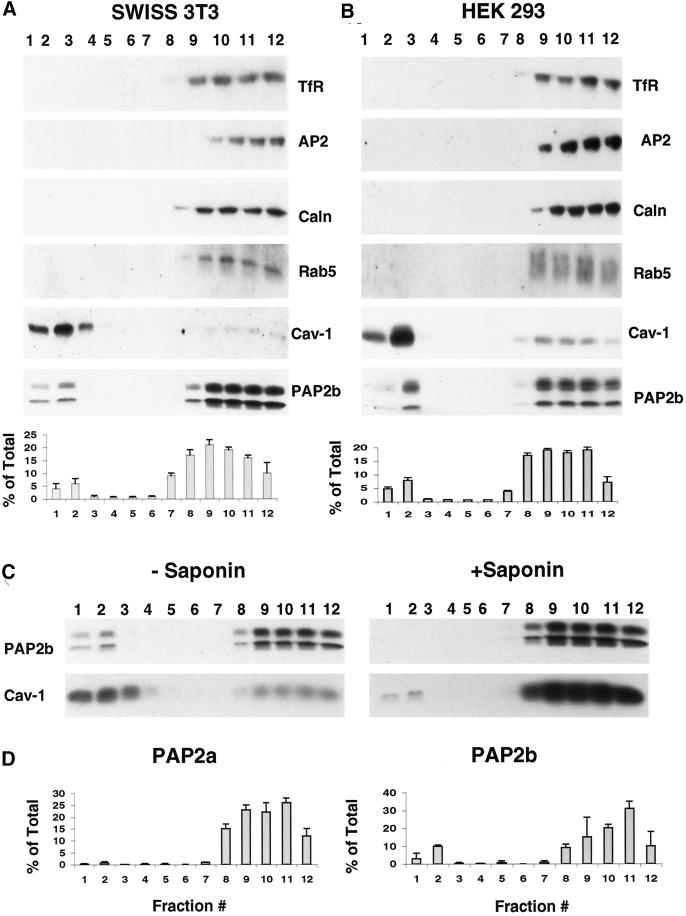Figure 5.
PAP2b localizes to caveolin-enriched detergent-resistant membrane domains. Swiss 3T3 cells (A) or HEK 293 cells (B) were lysed in 1% TX100 at 4°C and fractionated on a sucrose density gradient (two 100-mm dishes of confluent cells per gradient) as described in MATERIALS AND METHODS. Aliquots (1 ml) were collected with fraction 1 representing the top of the gradient and fraction 12 representing the bottom. Protein distribution in one-thirtieth of each fraction was analyzed for indicated proteins (TfR, transferrin receptor; AP2, adaptin; caln, calnexin; cav-1, caveolin) by Western blotting with the corresponding specific antibody as described in MATERIALS AND METHODS. Thirty microliters of each fraction (1 ml total) were assayed for PAP activity using 100 μM PA/1 mM TX100 as substrate for 30 min at 37°C and expressed as a percentage of activity in each fraction of the total (mean ± SD of triplicate determinations.) Note: there is two to three times more protein in the HEK 293 cell lysate as compared with the Swiss 3T3 cell lysate. (C) Swiss 3T3 cells were lysed in 1% TX100 in the presence (+) or absence (−) of 0.2% saponin at 4°C and fractionated as described above. One-thirtieth of each fraction was analyzed for the distribution of Cav-1 and PAP2b by Western blotting. (D) HEK 293 cells were transfected with pcDNA (vector), pcDNA-hPAP2a, or pcDNA-hPAP2b as described in MATERIALS AND METHODS, lysed in 1% TX100 at 4°C, and fractionated on a sucrose density gradient (six 10-mm dishes per gradient). Thirty microliters of each fraction (1 ml total) was assayed for PAP activity as described above. PAP activity in each fraction was corrected by subtracting activity from vector-transfected cells and expressed as a percentage of activity in each fraction of the total (mean ± SD of triplicate determinations.). Similar results were obtained in two independent experiments.

